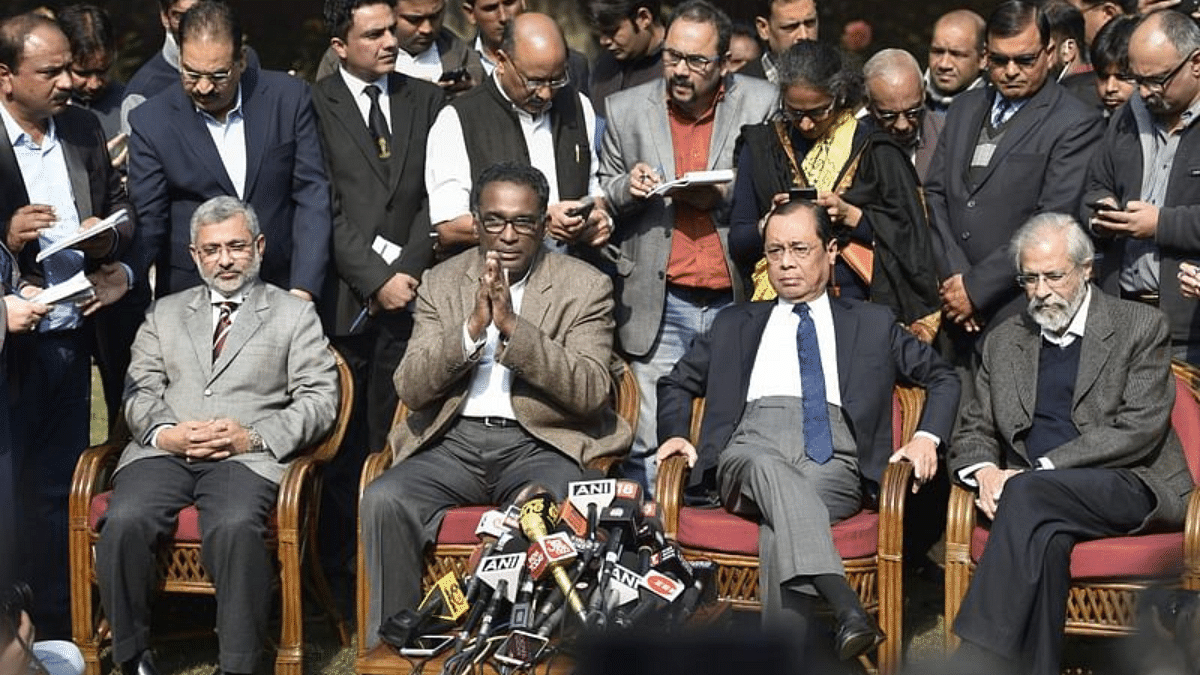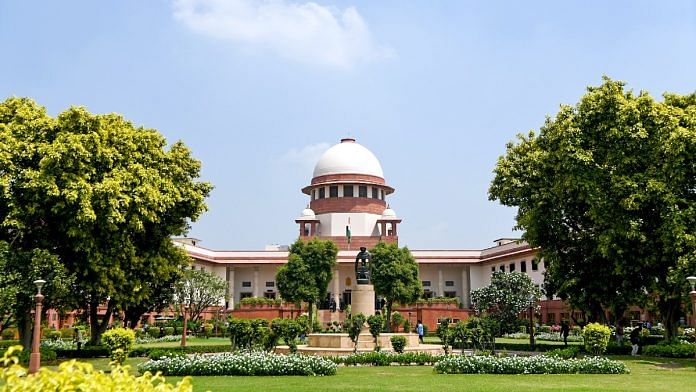New Delhi: Chief justices may be using their ‘master of the roster’ powers strategically to “influence the outcomes of important cases”, and wield the power to give themselves “a greater say than other judges…in deciding the most important issues of the day,” revealed research in a new book titled ‘Court on Trial’.
The book, published by Penguin India this month, has been authored by Aparna Chandra, associate professor of law at the National Law School of India University, Bengaluru; Sital Kalantry, professor of law and associate dean at the Seattle University School of Law; and William H.J. Hubbard, professor of Law at the University of Chicago Law School.
It presents a data-driven account of the Supreme Court of India and proposes a practical agenda for reform.
One of the chapters titled ‘First Amongst Equals? Master of the Roster and Strategic Case Assignments’ speaks of the power of the ‘master of the roster’. This refers to the powers of the Chief Justice of India (CJI) to constitute benches to hear cases.
The chapter, the book said, “provides evidence that Chief Justices influence the outcomes of important cases by using their administrative powers of case assignment”.
It found that the CJI is 3.6 times as likely to be on a three-judge bench compared to the next senior-most judge. “In the cases covered in our study, Chief Justices assigned 88 per cent of the Constitution Bench cases to themselves, and were four times more likely to be on a Constitution Bench as the next senior-most judge,” the book said.
The findings were based on a study of cases decided by the Supreme Court between 2010 and 2015. The book also found that there was no correlation between seniority of judges and their likelihood to be assigned to a three-judge or a Constitution Bench.
According to the book, Chief Justices often tend to “over-assign those judges to a Constitution Bench who were appointed to the Supreme Court during their own Chief Justiceship”.
It then concludes that, in practice, the rostering power is deployed “in a strategic manner, across the board, and not only in discrete instances”.
“So, when the Chief Justice over-assigns Constitution Bench cases to himself, this contradicts the claim that the Chief Justice has no more power than other judges on the judicial side. The Chief Justice wields the ‘master of the roster’ power to give himself a greater say than other judges in shaping judicial discourse and in deciding the most important issues of the day,” it added.
According to former Supreme Court judge, Justice M.B. Lokur, too, the authority of the ‘master of roster’ has been slowly converted into a power.
‘Untrammelled power, little accountability’
The chapter on the ‘Master of the Roster’ power begins by recalling the unprecedented press conference held by four judges of the Supreme Court — Justices Jasti Chelameswar, Ranjan Gogoi, Madan Lokur and Kurian Joseph — on the lawns of Justice Chelameswar’s house back in January 2018.

The four judges registered their differences with then Chief Justice Dipak Misra in matters related to court administration. They claimed that the Supreme Court’s conduct was “not in order” and that “unless this institution is preserved, democracy can’t be protected in this country”.
A letter that the judges had written to then CJI Misra was also released to the media. “There have been instances where cases having far-reaching consequences for the nation and the institution had been assigned by the Chief Justice of this court selectively to the benches ‘of their preference’ without any rationale for this assignment. This must be guarded against at all costs,” the letter said.
In response, CJI Misra made public the assignment of cases in the Supreme Court, making the roster of judges public for the first time.
Referring to the conference, the book explained, “The concern voiced at the press conference, and generally by court watchers, is that Chief Justices may be using the master of the roster power to allocate judges to specific cases in such a way as to influence outcomes in those cases.”
The book also looked at the dissent rate of CJIs. In its study of cases decided by the Supreme Court between 2010 and 2015, of the 39 cases decided by a Constitution Bench, the Chief Justice was never in dissent.
The book highlighted that “the Chief Justice was always on the winning side of a split decision on a Constitution Bench”.
Referring to its own research and those by several other scholars, the book said, “Taken together, this data suggests that assignments to Constitution Benches are strategic, and are consistent with the hypothesis that the master of the roster power is deployed with a view to influencing outcomes.”
It then suggested that, in principle, the master of the roster power is untrammelled, and there is no clarity on the principles by which it is exercised.
“There is little accountability for the exercise of the power, which leaves open the possibility of misuse in individual cases, and for strategic deployment to suit outcomes preferred by the Chief Justice more generally,” it added.
(Edited by Richa Mishra)
Also Read: 4 letters, 1 response — how Modi govt’s tussle with SC on judge appointments played out over 7 yrs



